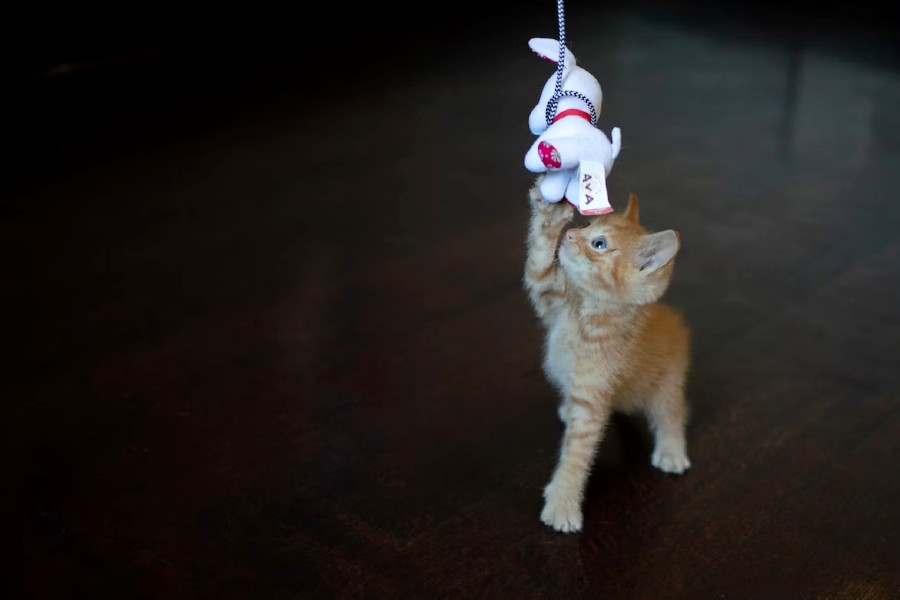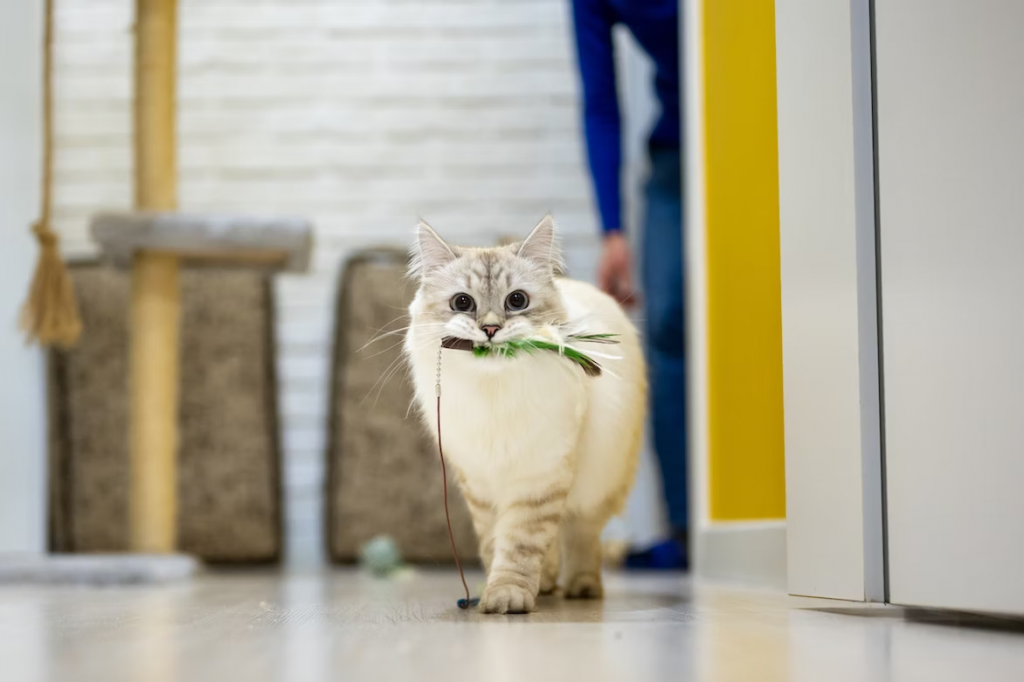
Hey there, fellow cat lovers! You maybe already read many of our tips and advice, but have you ever wondered about the best approach to your cat’s playing process?
Take your chance and find out more about it. My name is Jessica, a 35-year-old cat owner and veterinarian hailing from the beautiful state of Michigan. As a proud cat mom and vet with a degree in veterinary medicine, I know how important playtime is for our feline friends. So today, I want to share with you some fun and engaging tips on playing with your cat. Trust me, your kitty will thank you for it!
But before we dive into the tips, have you ever considered getting a cat breed test for your feline friend? A cat breed test can give you valuable insights into your cat’s breed, genetic traits, and health predispositions, which in turn can help you tailor your playtime activities to better suit their unique needs and preferences. Now, let’s get to those tips!
Make it a routine
Consistency is key when it comes to playing with your cat. Establishing a routine not only helps to build a stronger bond between you and your fur baby but also helps keep them mentally stimulated and physically active. Set aside at least 10-15 minutes twice a day for playtime – your cat will soon look forward to these sessions.
Choose the right toys
Cats are natural-born hunters, and their play instincts often mirror their hunting behaviors. To keep your cat engaged, choose toys that cater to their natural instincts. Popular options include wand toys with feathers, mice, or other small prey-like attachments, and even simple items like crumpled paper balls or cardboard boxes. Remember to switch up the toys every now and then to keep things fresh and exciting.
Let them ‘hunt’
Playtime is a great way to satisfy your cat’s hunting instincts while keeping them safe indoors. When playing with wand toys, make the toy mimic the movements of a real prey – darting, hiding, and pausing. This will entice your cat to stalk, pounce, and ultimately “catch” their prey, providing them with mental stimulation and a sense of accomplishment.
Go high and low
Cats love to explore different heights and levels, so don’t forget to incorporate vertical play into your sessions. Encourage your cat to jump onto shelves, climb cat trees, or leap onto furniture (as long as it’s safe and allowed, of course!). This will not only challenge them mentally but also help to strengthen their muscles and improve their agility.
Engage their senses
Cats rely on their senses to explore the world around them. To make playtime even more appealing, engage your cat’s senses by incorporating different textures, sounds, and scents into their play. Toys that crinkle, squeak, or contain catnip can provide an extra layer of excitement and stimulation for your furry friend.
Reward them
Positive reinforcement goes a long way in strengthening the bond between you and your cat. Praise your cat with verbal affirmations, pets, or even treats after a successful play session. This will help them associate playtime with positive experiences and encourage them to engage more in the future.

Know when to call it quits
Just like us, cats can get tired or lose interest during playtime. If your cat starts to show signs of disinterest, like walking away or grooming themselves, it’s time to wrap up the session. This is a good time to provide a small reward, such as a treat or cuddles, to end the play session on a positive note.
Don’t forget solo play
While interactive playtime with you is essential, it’s also important to provide your cat with opportunities for solo play. Leave out a few toys that your cat can play with independently, like balls, puzzle toys, or even a cardboard box. This will help keep them entertained and stimulated even when you’re not around.
Keep it safe
Safety should always be a priority during playtime. Check toys regularly for signs of wear and tear, and replace them as needed. Supervise play sessions, especially when introducing new toys, and ensure your cat isn’t ingesting any small parts or materials that could pose a choking hazard. Be mindful of your cat’s nails and teeth during playtime to avoid accidental scratches or bites. And always make sure that the play environment is secure and free of hazards, like cords or breakable items.
Observe and learn
Each cat is unique, with their own preferences and play styles. Spend time observing your cat’s behavior during playtime to learn what they enjoy most. This will help you tailor your play sessions to suit their individual needs and preferences, making for a more enjoyable and engaging experience for both you and your feline friend.
Get creative
Don’t be afraid to think outside the box when it comes to playing with your cat. Cats can find amusement in the simplest of things, like a paper bag or an empty toilet paper roll. Use your imagination and get creative with DIY toys and games that cater to your cat’s interests. Plus, the time and effort you put into creating these toys will only make playtime feel even more special and rewarding.
Involve the whole family
Cats are social creatures, and they can benefit from forming bonds with multiple people in the household. Encourage everyone in your family to participate in playtime with your cat. This not only provides your feline friend with a variety of play styles and experiences but also helps to strengthen their bond with each family member.
In conclusion, playing with your cat is an essential aspect of ensuring their overall well-being. By incorporating these tips into your playtime routine, you’ll be well on your way to creating a fun, engaging, and healthy environment for your feline friend. So go ahead, grab that wand toy, and let the games begin! Your cat will thank you for it with purrs, headbutts, and endless affection. Happy playing!
Become a Harlem Insider!
By submitting this form, you are consenting to receive marketing emails from: . You can revoke your consent to receive emails at any time by using the SafeUnsubscribe® link, found at the bottom of every email. Emails are serviced by Constant Contact








